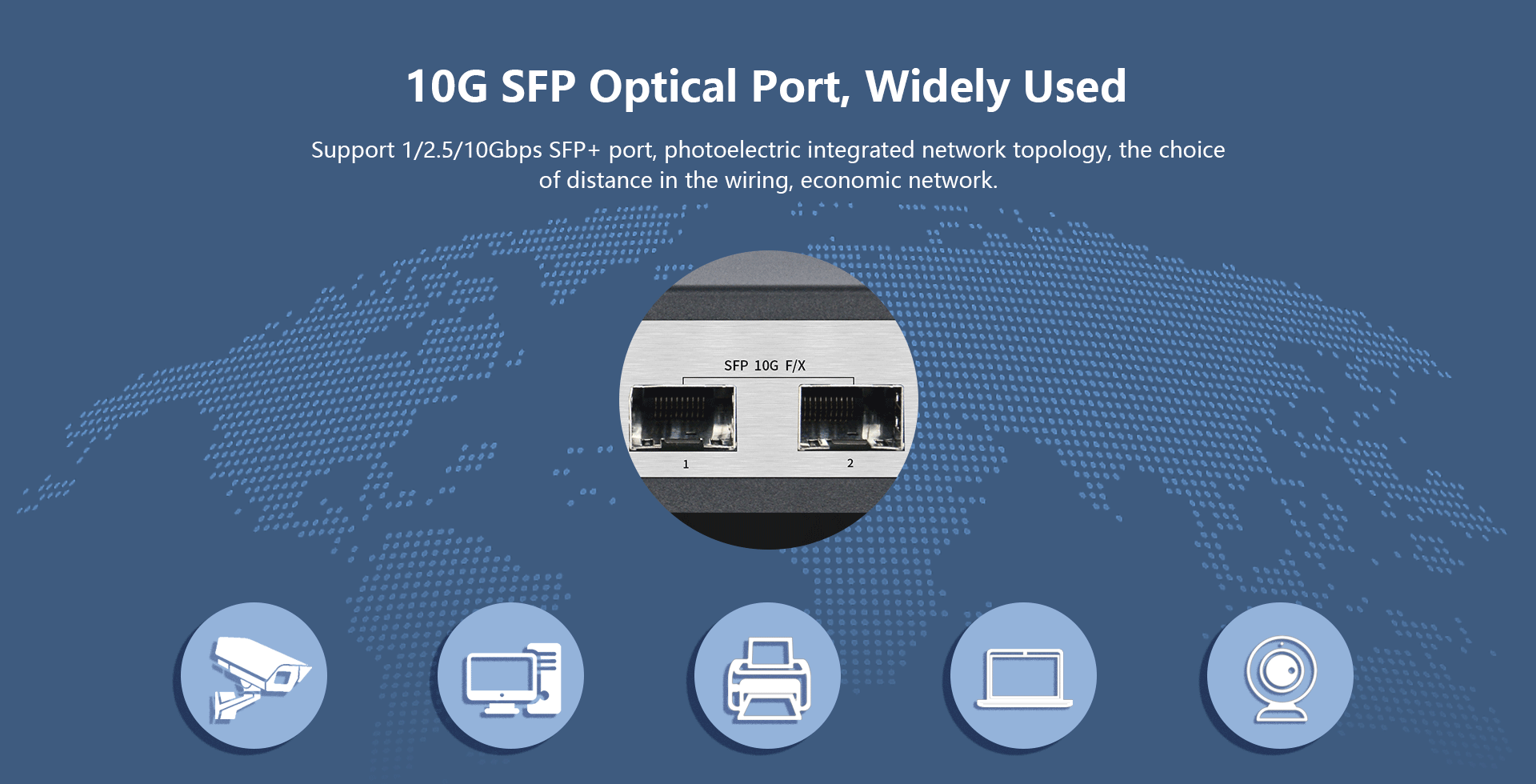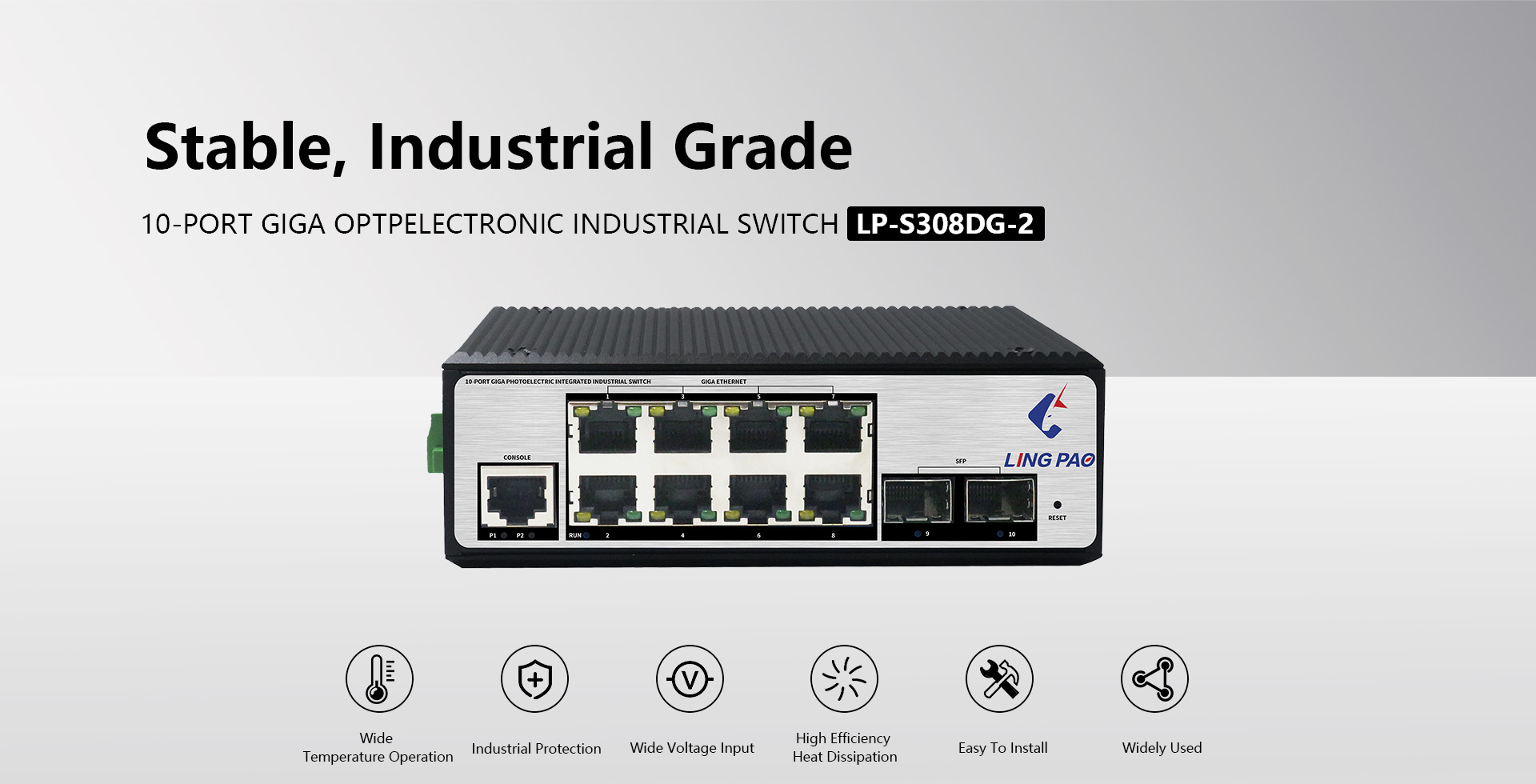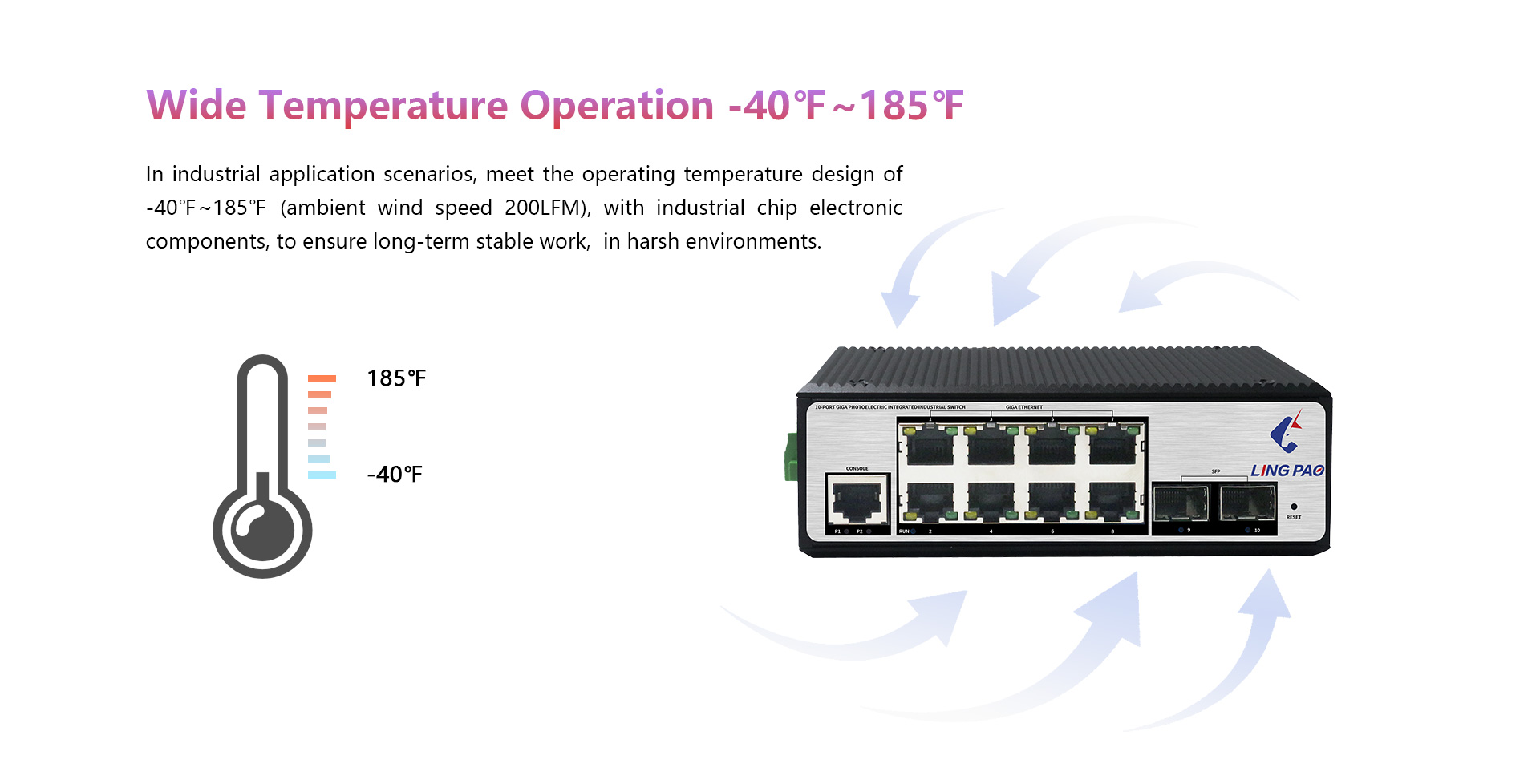Industrial Switches: The Key Component for Automation and IoT Applications
In today’s increasingly connected world, industrial switches are becoming an essential component for automation and IoT applications. These devices play a crucial role in establishing reliable and secure communication networks in industries such as manufacturing, transportation, energy, and healthcare. They are the key to managing and monitoring processes, machines, and systems, enabling organizations to improve their productivity, efficiency, and overall performance.
So, what exactly are industrial switches and why are they so important in automation and IoT applications? Industrial switches are specialized networking devices designed to connect and control multiple devices within an industrial setting. They function as a central hub, facilitating the transfer of data between connected devices such as sensors, machines, and computers. In simpler terms, industrial switches act as the bridge that connects devices and enables them to communicate with each other.
One of the main reasons industrial switches are crucial in automation and IoT applications is their ability to provide reliable and secure connectivity in harsh and demanding industrial environments. Traditional switches that are used in home or office settings are not suitable for such environments as they are not built to withstand extreme temperatures, dust, moisture, and other hazards that are common in industries. Industrial switches, on the other hand, are specifically designed to operate and thrive in these challenging conditions. They come with ruggedized enclosures, sealed connectors, and enhanced safety features that protect them from vibration, electromagnetic interference, and other industrial hazards. As a result, they are able to maintain constant and uninterrupted communication between devices, which is crucial for efficient automation and IoT applications.
Another key feature of industrial switches that makes them indispensable in automation and IoT applications is their scalability. In industrial environments, there can be hundreds or even thousands of devices that need to communicate with each other. Therefore, the network infrastructure should be able to accommodate a large number of devices while maintaining high speed and performance. Industrial switches are designed to meet these requirements and can handle higher bandwidths and more connections compared to traditional switches. They also come with advanced management and monitoring capabilities, allowing for easy expansion and integration of new devices into the network. This scalability makes them a perfect fit for the ever-growing world of automation and IoT, where the number of connected devices is expected to continue to rise.
In addition to being reliable and scalable, industrial switches also offer advanced security features that are crucial in today’s industrial landscape. Automation and IoT technologies have brought about a massive increase in data collection and communication, often involving sensitive and critical information. This makes security a top priority for industrial networks. Industrial switches address this concern by offering advanced security features such as access control, authentication, and data encryption, protecting the network and the data it carries from cyber threats. Furthermore, these switches can be integrated with firewalls, intrusion detection systems, and other security measures to ensure a multi-layered approach to network security.
Finally, industrial switches offer extensive network management and diagnostic capabilities, making it easier for organizations to monitor and control their automation and IoT applications. These switches provide real-time network visibility, allowing system administrators to identify potential issues and troubleshoot them before they affect the overall performance of the network. They also come with advanced management software, which provides network analytics, reporting, and configuration tools, enabling organizations to optimize their network for better performance.
industrial switches are a vital component for automation and IoT applications. They provide the necessary connectivity, scalability, security, and management capabilities to enable efficient and effective communication between devices in industrial environments. With the increasing integration of automation and IoT technologies in industries, the demand for robust and reliable industrial switches will continue to grow. As a result, manufacturers are constantly developing and improving these devices to meet the evolving needs of the industry. It is safe to say that industrial switches are the key to unlocking the full potential of automation and IoT in industries.

Understanding the Different Types of Industrial Switch and Their Uses
An industrial switch is an essential component for any network infrastructure in an industrial setting. It acts as a mechanism to connect different devices together, such as computers, servers, printers, and other networked equipment. Industrial switches are designed to withstand harsh environments and offer reliable and secure communication between various devices in factories, warehouses, and other industrial settings. They differ from traditional switches used in home or office networks, as they are specifically designed to meet the demands of industrial environments. In this article, we will discuss the different types of industrial switches and their uses.
Managed Industrial Switches
Managed industrial switches offer advanced features and configuration options, making them the most versatile and commonly used type of industrial switch. They allow network administrators to control and monitor the traffic and devices connected to the network. These switches also offer features such as VLANs, Quality of Service (QoS), and redundancy protocols for improved network performance and reliability. Managed switches are suitable for large industrial networks that require a high level of control and customization.
Unmanaged Industrial Switches
Unmanaged industrial switches are designed for plug-and-play installation and do not require any configuration. These switches are suitable for simple, small-scale networks that do not require advanced features. They are cost-effective and easy to use, making them an ideal choice for smaller industrial applications where budget and simplicity are key considerations.
Industrial Power over Ethernet (PoE) Switches
Industrial PoE switches offer the unique capability of providing power to connected devices over Ethernet cabling, eliminating the need for separate power cables. This feature is especially useful in industrial settings where power outlets may be scarce and cabling needs to be kept to a minimum for safety reasons. Industrial PoE switches are an excellent choice for applications such as security cameras, wireless access points, and VoIP phones.
Industrial Layer 2/3 Switches
Layer 2/3 switches are designed to handle both Layer 2 (Data Link) and Layer 3 (Network) traffic. They offer advanced features such as routing protocols and Virtual Private Networks (VPNs) for efficient data transmission across multiple networks. Layer 2/3 switches are suitable for large industrial networks that require a high level of data control and optimized traffic flow between different network segments.
DIN-Rail Mountable Switches
DIN-Rail mountable switches are compact, rugged switches that can be easily mounted on DIN-Rails, occupying less space and offering easy installation in industrial enclosures. These switches are designed for harsh environments and can withstand extreme temperatures, shocks, and vibrations, making them an ideal choice for applications in factories, power plants, and transportation systems.
Industrial Ethernet Switches
Industrial Ethernet switches are built for high-speed and reliable data transmission over Ethernet networks. They offer fast speeds and low latency for real-time applications and are ideal for industrial applications that require fast and efficient data transfers, such as process control systems, industrial automation, and robotics.
Industrial Secure Switches
Industrial secure switches offer advanced security features, such as port security and access control, to protect sensitive data and prevent unauthorized access to the network. They are suitable for applications that require a high level of security, such as financial institutions, government facilities, and military operations.
Industrial Serial Device Servers
Industrial serial device servers allow devices with serial interfaces, such as printers and barcode scanners, to be connected to an Ethernet network. They offer serial-to-Ethernet conversion and allow remote access and control of these devices over the network, eliminating the need for dedicated wiring and serial ports.
Industrial Media Converters
Industrial media converters enable connectivity between different types of network cabling, such as fiber optic and copper, or different transmission speeds, such as Fast Ethernet and Gigabit Ethernet. They are used to extend the network reach and provide reliable and efficient data transmission over long distances.
industrial switches are crucial for creating a reliable and efficient network infrastructure in industrial settings. The type of switch used depends on the specific needs and requirements of the network, and factors such as size, speed, and level of control. Choosing the right industrial switch is essential for ensuring optimal network performance, reliability, and security in demanding industrial environments.

What Are the Key Features of Industrial Switches for Robust Network Infrastructure?
In this article, we will explore the key features of industrial switches that make them essential for building a robust network infrastructure.
Durability: One of the most essential features of industrial switches is their durability. These switches are designed to withstand extreme temperatures, humidity, and dust, making them ideal for use in harsh industrial environments. They are often made with high-grade materials and are shielded from electromagnetic interference, making them more durable than traditional switches.
Wide Temperature Range: Industrial switches can operate reliably in a wide temperature range, typically from -40 to 185 degrees Fahrenheit. They can also function effectively in environments with high levels of temperature fluctuations, which are common in industrial settings. This wide operating temperature range ensures that these switches can maintain stable network connections, even in the most challenging conditions.
Higher MTBF (Mean Time Between Failures): The Mean Time Between Failures (MTBF) is a measure of the reliability of a device, and industrial switches typically have a higher MTBF than traditional switches. This means that they can function for extended periods without any interruptions, ensuring smooth and reliable network operations. Industrial switches can also withstand high levels of vibration, which is a common occurrence in industrial environments.
Redundancy: Industrial switches often come with built-in redundancy features, such as dual power inputs and multiple Ethernet ports. These features ensure that the network can continue to operate even if one switch or port fails. Redundancy is crucial in industrial settings where any network downtime can lead to significant production losses or even safety hazards. With the built-in redundancy, industrial switches can provide a reliable and uninterrupted connection to critical systems.
Power Over Ethernet (PoE): Many industrial applications require powering devices located in remote or hard-to-reach areas, making PoE an essential feature for industrial switches. PoE eliminates the need for separate power supplies and reduces the complexity of cabling, resulting in a cost-effective and space-saving solution. With PoE, industrial switches can provide both data and power to devices such as IP cameras, wireless access points, and VoIP phones.
Industrial Protocol Support: Industrial infrastructure often relies on specific communication protocols, such as Modbus, DNP3, and Profibus, to enable communication between devices. Industrial switches are designed to support these protocols, allowing for seamless integration with other industrial equipment and systems. This ensures that data is transmitted accurately and efficiently, facilitating real-time monitoring and control of industrial processes.
Network Management Capabilities: The ability to monitor and manage a network is crucial for maintaining its stability and performance. Industrial switches come with advanced network management features, such as SNMP, CLI, and web-based management interfaces, providing network administrators with full control over the network. These features also facilitate troubleshooting and help identify potential issues before they lead to network downtime.
Enhanced Security: Industrial switches offer a higher level of security than traditional switches, as they are often used in critical infrastructures that require robust protection against cyber threats. Industrial switches provide features such as port-based and MAC-based access control, VLAN, and advanced encryption protocols to safeguard against unauthorized access and protect sensitive data.
Longevity and Reliability: Industrial switches are designed to have a long product lifecycle, typically lasting more than ten years. This is crucial for industrial applications, where network infrastructure is expected to operate continuously for extended periods. Their reliability and longevity also make them a cost-effective solution in the long run, reducing maintenance and replacement costs.
the key features of industrial switches, such as durability, wide temperature range, redundancy, PoE, industrial protocol support, network management capabilities, enhanced security, and longevity, make them essential for building a robust network infrastructure in industrial environments. These switches are specifically designed to withstand the challenging conditions and offer reliable and uninterrupted network connections, making them a critical component of any industrial network.

How do Industrial Switches Enhance Network Security?
Network security is a critical aspect of any industrial network, and with the rise of digitalization and automation, it has become even more crucial. Industrial switches play a significant role in enhancing network security by providing advanced features and functionalities to protect against potential cyber threats. In this article, we will discuss how industrial switches enhance network security and the benefits they offer to industrial networks.
Secure Network Segmentation:
Industrial switches offer secure network segmentation, allowing the network to be divided into smaller, isolated sections or subnets. This segmentation helps in limiting the impact of any cyber-attack by containing it within a specific segment, preventing it from spreading throughout the entire network. By segmenting the network, the switches provide an added layer of security, making it difficult for potential attackers to gain access to critical systems and data.
VLANs (Virtual Local Area Networks):
Industrial switches support VLANs (Virtual Local Area Networks), which are logical networks created within a physical network. VLANs help in separating different types of network traffic and devices, reducing the risk of unauthorized access and potential network breaches. Each VLAN can have its security policies, making it possible to control access and monitor the traffic flow within the network effectively.
Traffic Prioritization:
Industrial networks often have a high volume of traffic, consisting of both critical data and non-critical data. By using Quality of Service (QoS) features offered by industrial switches, data and traffic can be prioritized based on their importance. This prioritization ensures that critical data and traffic receive dedicated bandwidth and are not impacted by non-critical data. By prioritizing traffic, switches protect against potential network congestion and denial of service attacks.
Secure Port Authentication:
Industrial switches offer various port-based authentication methods, such as MAC address authentication, 802.1x authentication, and port security. These authentication methods ensure that only authorized devices and users can access the network, preventing any potential malicious actors from gaining entry. Additionally, switches can detect and block unauthorized devices attempting to connect to the network, providing an additional layer of security.
Network Monitoring and Management:
Industrial switches offer advanced network management and monitoring features that provide real-time visibility into the network’s health and performance. These switches can detect and report any unusual or suspicious network activity, allowing network administrators to take necessary actions promptly. Moreover, with the ability to monitor network traffic, switches can identify any potential network vulnerabilities and mitigate them before they can be exploited.
Redundancy and Resiliency:
Industrial switches ensure high network availability by offering redundancy and resiliency features. These switches are designed for industrial environments, where network downtime can result in significant financial losses and safety hazards. They offer redundant power supplies, hot-swappable modules, and rapid failover capabilities, ensuring that the network can withstand any potential failures or cyber-attacks.
Advanced Security Protocols:
Industrial switches support advanced security protocols, such as Secure Shell (SSH), Secure Sockets Layer (SSL), and Simple Network Management Protocol Version 3 (SNMPv3). These protocols provide secure communication and data transfer between network devices, ensuring that sensitive information is not compromised. Additionally, industrial switches also support encryption methods, such as Advanced Encryption Standard (AES), to protect data from potential eavesdropping attempts.
Network Access Control:
Industrial switches offer network access control, which allows network administrators to define and enforce access policies for different levels of users and devices. With this feature, administrators can control the type of traffic allowed on the network, ensuring that only authorized devices and users can access the network resources.
Network Hardening:
Industrial switches are designed to operate in harsh environmental conditions, making them less prone to physical tampering and attacks. Moreover, these switches often follow industry-specific security standards and regulations, such as Foundation Fieldbus-Device Type Manager (FF-DTM) and International Electrotechnical Commission (IEC) 61850. By adhering to these standards, switches provide a hardened network environment, making it difficult for malicious actors to compromise the network.
Conclusion:
Industrial switches play a crucial role in enhancing network security for industrial networks. With their advanced features and functionalities, these switches offer secure network segmentation, VLANs, traffic prioritization, secure port authentication, network monitoring and management, redundancy and resiliency, advanced security protocols, network access control, and network hardening. By using these switches, industries can ensure the security of their networks and prevent potential cyber threats, protecting their critical infrastructure and sensitive data. As the digitalization and automation of industrial networks continue to expand, the use of industrial switches will become even more crucial to maintaining a secure and reliable network.
